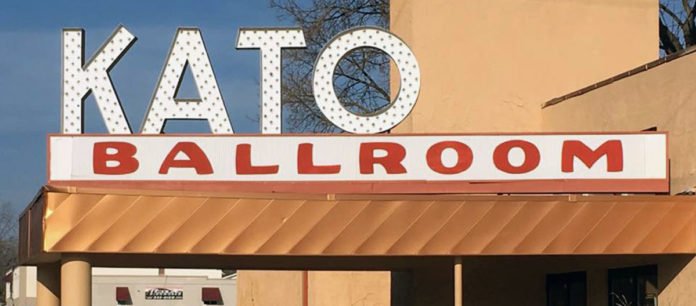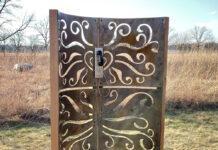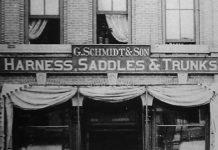Back in the 1950s and 1960s, ballrooms were a staple of Americana—grand buildings packed full of young people sock-hopping and jitter-bugging to rock and roll tunes that would eventually become golden oldies. Almost every weekend, there was some sort of dance or event at ballrooms across Minnesota, which had more active ballrooms than any other state by the 1980s, according to the Minnesota Ballroom Operators Association.
No story of the Minnesota dance scene would be complete without including the Kato Ballroom, which has held an iconic place in the Mankato community since it was constructed in 1942. In the decades that followed, the Kato has hosted thousands of events and attracted such big names as Buddy Holly, Glenn Miller, Jerry Lee Lewis, Johnny Cash, Lawrence Welk, Louis Armstrong, the Beach Boys and the Everly Brothers. Former president Ronald Reagan visited the location in the 1980s, and Governor Tim Walz even had one of his three inaugurations there in 2019.
But times have changed quite a bit since the swinging 1950s. Teenagers don’t wear poodle skirts or saddle shoes anymore—and they don’t typically learn ballroom staples such as the waltz or the polka. Because of this, ballrooms have been on a steady decline for years, with only about 120 still in operation across the country. Minnesota still boasts the most ballrooms of any state, but its number is down to 12. In 2017, the Withrow Ballroom—located outside Hugo, and officially the oldest ballroom in Minnesota—finally closed its doors.
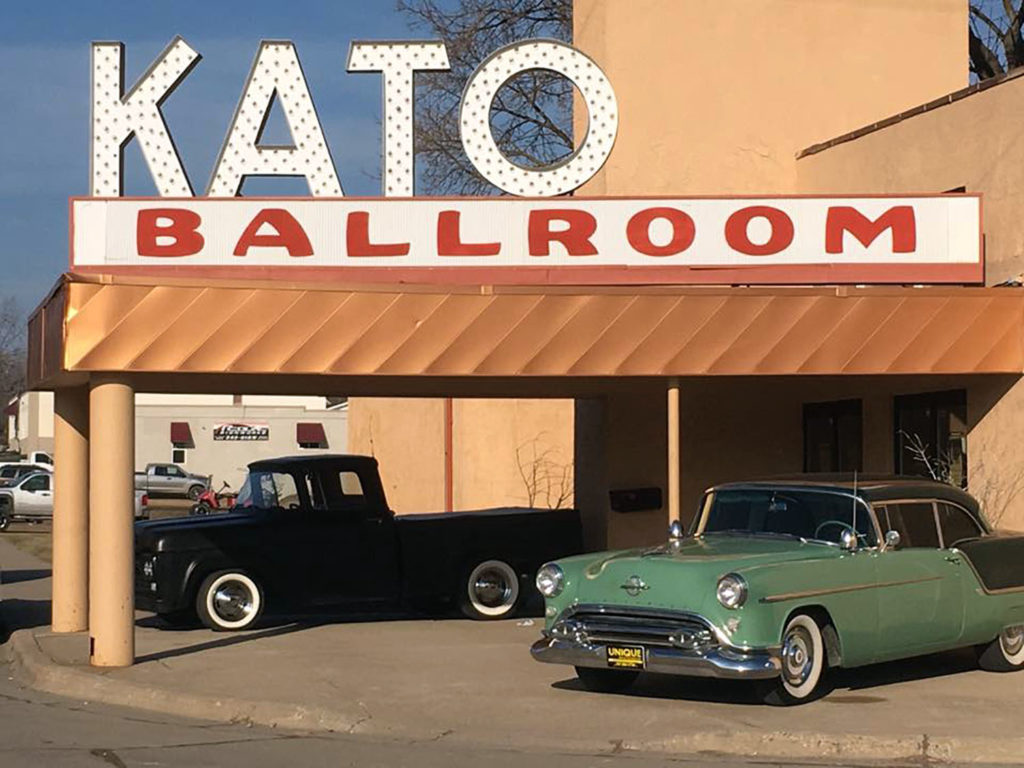
Yet, at the Kato Ballroom, the music plays on—even if the tune has changed.
“[The Kato] has been around forever,” said Tania Cordes, who bought the Kato in 2014. “It’s got the history of a lot of people who grew up here, came here dancing, met here… [But] people aren’t learning to dance anymore; people aren’t interested in dancing anymore. What we’ve done to sort of make a mini-comeback is we’ve started offering a lot of different things. When I got here, I thought to myself, ‘What can we do in this building? It doesn’t just have to be dances and weddings.’ We try to offer more. We’re open to pretty much anything.”
Starting the Music
The Kato Ballroom was built in 1946 by Herb Martinka, who operated it until 1982. In those nearly 40 years, the ballroom exploded in popularity, often with events every day of the weekend, every week of the year. Even a fire that burned the building to the ground in June of 1952 couldn’t stop the Kato’s momentum. When it reopened in February 1954, it was as in demand as ever.
Current manager Larry Bowers has been with the Kato since 1981, and he’s the ballroom’s unofficial historian. He’s the one who can tell interested listeners all about the Kato’s biggest events, such as when Buddy Holly took the stage on Jan. 25, 1959. The show was part of the “Winter Dance Party” tour that featured Holly, Ritchie Valens and J.P. “The Big Bopper” Richardson. Only eight days later, all three musicians were killed in an infamous plane crash near Clear Lake, Iowa.
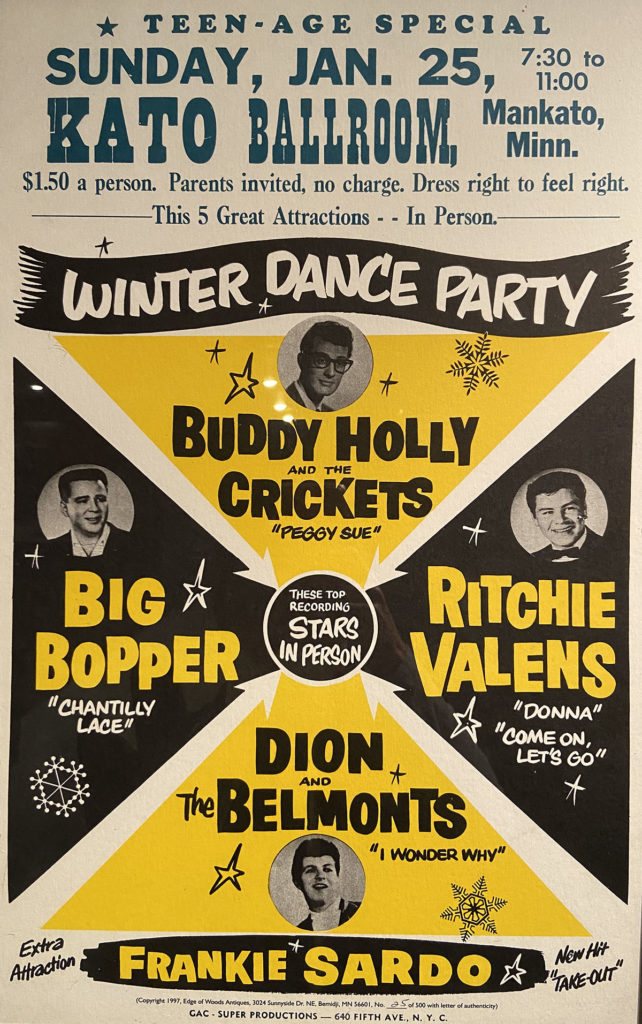
Then there’s Kato Ballroom’s largest concert, which took place on Nov. 22, 1964 and featured the Everly Brothers. More than 2,400 people attended that one—so many, Bowers said, that they exceeded the building’s 2,200-person fire code. But violating the fire code only resulted in a $75 fine, so Martinka only needed to let 50 more people into the concert to cover it.
“Martinka had 300 people outside [waiting], so he found out what the fire code fine was, and let them all in,” Bower said.
One night, Lawrence Welk was driving through to go to Austin, Minn. to play. He had the night off, he came in here and directed the Dick Mackle orchestra.Larry Bowers
The Kato Ballroom often hosted big bands or orchestras from the area, usually on Friday nights. Saturday was generally reserved for polka night. While there were usually events three times a week, Bowers said there were some weeks that the Kato would host a dance or concert almost every night, drawing in 800 people a night on average.
The ballroom had an unexpected guest one evening while the Dick Mackle orchestra was playing.
“One night, Lawrence Welk was driving through to go to Austin, Minn. to play,” Bowers said. “He had the night off, [and] he came in here and directed the Dick Mackle orchestra.”
There were also countless wedding receptions held in the building, but they had a twist: the wedding group wouldn’t have the entire ballroom to themselves. Instead, wedding parties would purchase something like 150-200 tickets for people, and their whole group would sit on one side of the ballroom, while all the other guests who had just come for the music sat on the other side. Sometimes, there would be more than one reception at the same time.
“On these wedding dances, they would all come at the same time,” Cordes said. “They’d get 100 tickets or something like that. And you could come, even if you weren’t part of the wedding.”
Changing the Tune
The ballroom switched hands briefly in the late 1970s before the Cordes family—which had owned a bowling alley in Mankato—took over ownership in 1981. That’s when Bowers, who had worked for the Cordes at their other business, came over as well. However, Tania Cordes, who married into the family, was not yet involved.
According to Cordes, there “wasn’t a lot of competition” in the 1980s, so the Kato enjoyed a near monopoly on entertainment south of the Twin Cities. Many of the ballroom’s offerings focused on the teenage crowd, as well as weddings and other events. But everything changed when the Civic Center was constructed in 1995. By the time Tania Cordes decided to buy the ballroom from her in-laws, the building had started to languish from a lack of activity.
I’ve always wanted to run an event center or do catering. I’d thought about it for a long time. I’ve saved recipes since I was like 10. I have huge recipe folders.Tania Cordes
“When I took over, things had sort of slowed down,” she said. “The Civic Center had come in and was doing bigger name concerts. There wasn’t as much happening here. It’s a difficult situation. You’ve got competition that’s newer and brighter and fancier… and you’ve got this ballroom in this town. Most of the ballrooms are a dying breed. There are very few left that are really doing anything.”
Cordes’ decision to take over the ballroom was a surprising one, given her impressive business background. A Chicago native, she had earned a degree in economics from Colgate University and an MBA from Harvard Business School, holding down a variety of intense positions in the business world. But she had always been interested in running an event center, which is why the Kato caught her eye.
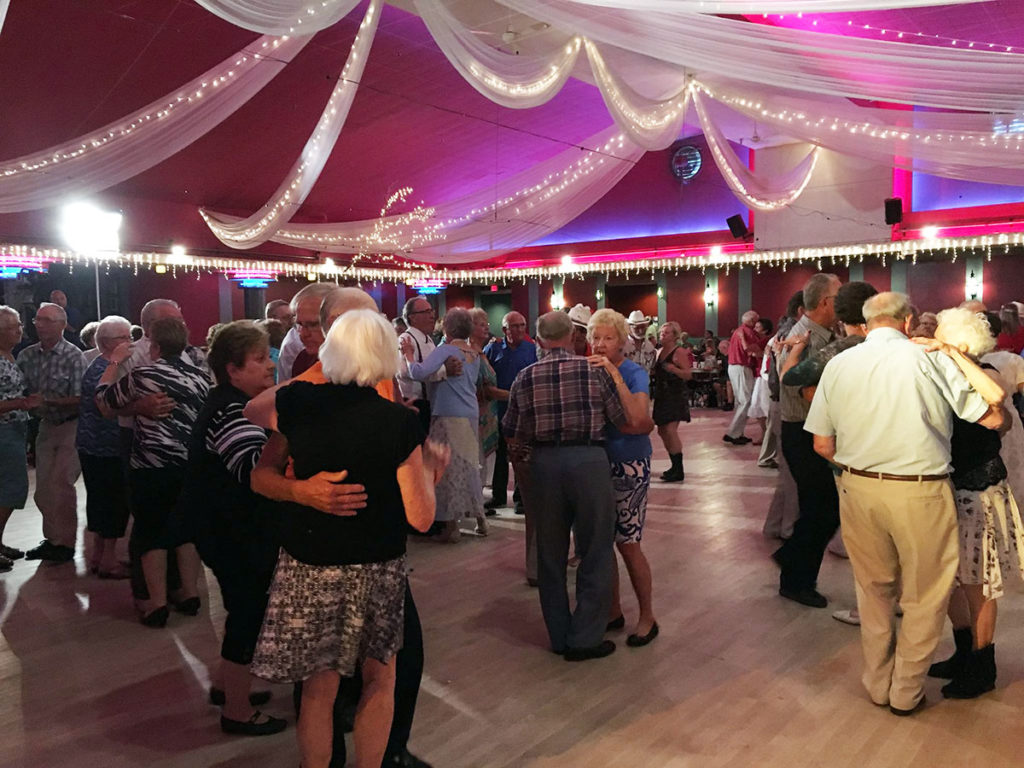
“I’ve always wanted to run an event center or do catering,” she said. “I’d thought about it for a long time. I’ve saved recipes since I was like 10. I have huge recipe folders.”
Cordes was living in Connecticut with her husband when she heard the Kato was going to be listed, and she said she was interested in both the chance to run her own event center and to come back to the Midwest with her family. Her plan at first was to manage the building and bring it up to speed for a year or two, as sort of a side project, before putting it back on the market for a better price. In the end, though, she decided to stay for good, purchasing the ballroom in 2014.
“I literally took this ballroom over sight unseen,” she said. “I’d only been here once, 20 years ago… I literally remember meeting Larry, coming into this dark old building, walking around for like five seconds and leaving. I got here in May [2012] to find a house, and I wanted to rent while doing this as a hobby for a bit, then put it back on the market. Well, we got down here and couldn’t find anything to rent. It was snowing. I remember crying and thinking, ‘Oh, my gosh… The ballroom’s a disaster, there’s garbage everywhere, it stinks… What was I thinking?’ But I never looked back.”
Cordes worked for about six months with Janet Sell (her husband’s sister) before taking over for real. Some of her friends flew over in September to help her completely renovate the space, doing everything from deep-cleaning the stage to updating the bathrooms.
“We worked for like 72 hours straight—painting, scraping, you name it,” Cordes recalled. “We tossed stuff. We brought in old living room furniture I had. We ripped out wallpaper and painted.”
The work didn’t stop there, though. Since Cordes took over, she has continually worked to improve the building, inside and out. She and her employees have painted almost every interior wall, painted the entire exterior, replaced every light bulb in the ceiling (and the famous sign on the roof), replaced the hardwood dance floor and redone the stage carpet, among many other projects.
“It’s been a work in progress,” Cordes said. “Every year, I’ve come up with a big project to do. There’s not a surface in this building at this point that we haven’t touched in some way.”
A New Era
In order to ensure the Kato’s success in modern days, Cordes had to go far beyond a new coat of paint; she needed to completely rethink what she could offer in a ballroom setting. She said one of her first ideas was reaching out to Mankato’s community theater troupe, the Merely Players, after seeing a sign advertising one of their shows.
“I thought, ‘Why don’t they do [a show] here?’” she said. “So, I got in touch with them. They came back with the Buddy Holly story. That was one of our very first dinner theaters that we did, and we sold out the entire weekend. It was the most fabulous show. People loved it.”
Since hosting “Buddy: The Holly Story” in 2016, the Kato has continued to host a Merely Players dinner theater show every year, ranging from “My Fair Lady” to “Back to the ’80s.” The Kato also started a new annual tradition with “Tony & Tina’s Wedding,” which is usually hosted in February. In addition, Cordes has organized the “Mankato Opry Jamboree,” an opry-style country music Christmas show featuring local talent, for several years now, and it has become one of the ballroom’s most well-attended events.
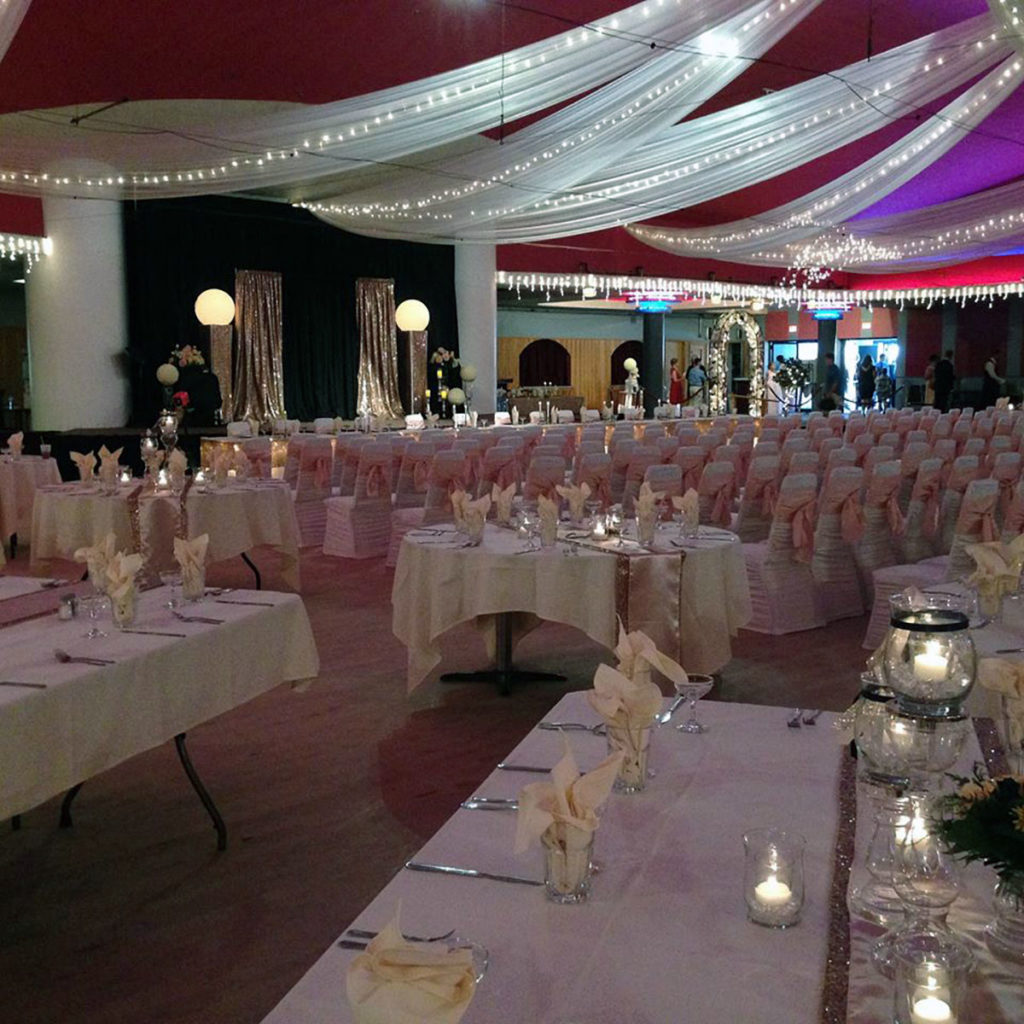
“For a long time, in the beginning, my motto was anybody in the ballroom is better than nobody in the ballroom,” Cordes said. “I would do anything and try anything. We became much more flexible. We’d think about things in a different way than it used to be.”
Over the years, tribute shows have been particularly popular. Cordes has also made a point of reaching out to local bands and other talent. Minneapolis-based indie-folk-rock band The Last Revel played one of its first shows at the Kato, while the rock band Trampled By Turtles used to rehearse in the building.
“Now they’re so big, we can’t afford them,” Bowers said with a rueful laugh.
But the Kato has hosted events that stray far from the musical entertainment scene, such as a recent Midwest American Wrestling and the annual Minnesota Pheasants Banquet. There have also been proms, class reunions, fundraisers and fashion shows. In addition, the space is popular for corporate events, private parties and wedding receptions.
People thought [the ballroom] was closed six years ago. Now, I can’t believe the places I send tickets to.Tania Cordes
“Right now, we’re at a nice stage,” Cordes said. “We have lots of repeats, [which] we didn’t have when I came. It’s nice to sometimes say, ‘No, we’re booked.’”
About 100 events are held at the ballroom every year, up from only about 10 when Cordes took over. In fact, Cordes has done so much in her time as owner that she received the National Travel and Tourism Week Attraction Award from Visit Mankato in 2016.
“I love it,” Cordes said. “It’s totally up my alley. It is so much for me. I love new events; I love trying new things. I’ve given up the whole saying that anything in the ballroom is better than nothing, because sometimes it’s not, I’ve decided. But we have done a lot. And we’ve brought in a lot of new things and new events. People thought [the ballroom] was closed six years ago. Now, I can’t believe the places I send tickets to.”
Challenging Times
Like nearly every business, the Kato Ballroom was severely affected by the COVID-19 pandemic earlier this year. In March, they abruptly shut down in the middle of the Merely Players’ much-anticipated dinner theater, “Jesus Christ Superstar.”
“We shut down right in the middle of our dinner theater,” Cordes said. “We’d completed one weekend, and then we had to refund everybody’s tickets for the next week.”
Because of Gov. Walz’s stay-at-home order, the ballroom wasn’t able to reopen until June, with its first event—a private wedding reception—actually taking place on July 3. Since then, Cordes said they’ve hosted quite a few weddings, which have all been successful, as well as private events such as corporate seminars and luncheons.
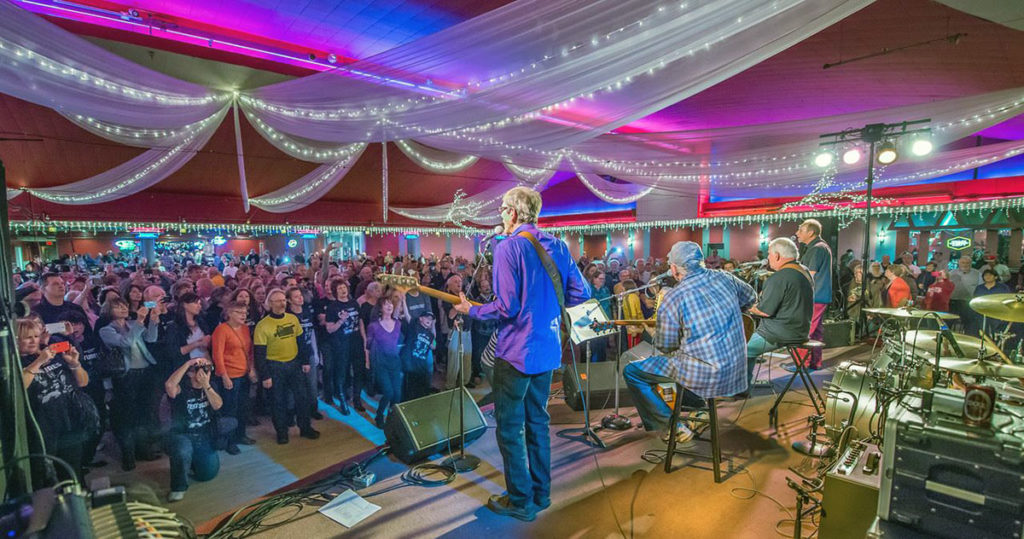
Cordes said that one reason they’ve been able to successfully host so many private events so quickly again is because of their size. They’re allowed to host 250 people, which is far below the numbers they usually hit.
“We’ve got plenty of space, with 26,000 square feet,” Cordes said. “It’s almost like being outside when you’re in the ballroom.”
Besides the limited headcount, the Kato Ballroom has also worked to ensure the safety of guests and employees in several other ways: hand sanitizers at the door, disposable masks available for those who need them, x’s on the dance floor to indicate six feet of separation, new glasses instead of refills, table separated by six feet and a limited number of unrelated people seated at each table. All workers wear masks and gloves, and the typical buffet offering is slightly altered. Guests can walk along the buffet table, but they tell employees what they’d like and then the employee will serve it, handing them the plate at the end of the table.
“We decided it’s just safer for us to handle the food,” Cordes said, explaining that “regular” buffets are allowed but they decided not to go that route yet. “It’s all worked out really well. We’ve actually had a lot of really great success. Everybody thanks us for being careful and are excited to get back out.”
Unfortunately, one highly anticipated event—the Bandwagon series—isn’t yet able to be offered. Cordes explained that participating sponsors are nervous about everyone’s health and safety, given the event’s core demographic, so she won’t be able to offer it any time soon. She added that she hopes it will be able to start up again in November or December, but it’s too soon to know how things will work out.
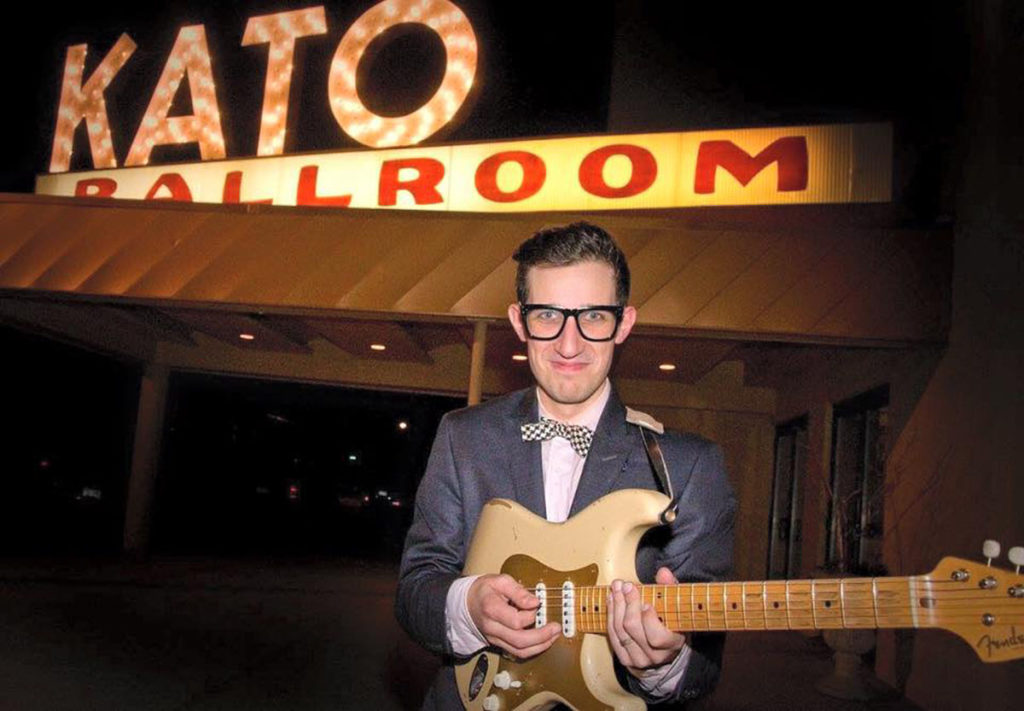
“Every month, I have older people calling me and asking me if we’re going to do Bandwagon,” she said. “I even had one lady offer to pay me for the band. We toyed with the idea of trying to do one, [but] big corporations are nervous about these types of things.”
Cordes said she isn’t sure if they’ll host their traditional New Year’s Eve Gala, a 60-some year tradition, but they do have plans for a dinner theater in February, “The Buddy Holly Story.” The show was originally planned for May, then rescheduled to September, and now scheduled for February.
While times are still uncertain, Cordes said that she knows the Kato will make it through.
“This whole COVID thing is having a lot more long-lasting effects than just being shut down for six months,” she said. “A lot of people aren’t going to be able to make it back. But we’re holding on. We’re open, and we’re actually a great space right now for everyone to do things because we’ve got the space. We can effectively and safely socially distance everyone. It’s funny—every day, things change. But we’ve been very good about all the COVID plans. We have a preparedness plan in place, and all my employees have been trained. Things have gone very smoothly to date on everything we’ve had. We’ve had no complaints, no issues, no nothing.”
The Kato Ballroom’s next public event is a Gun and Knife Show, running the weekend of Sept. 26. Admission is $5, and attendees can buy, sell and trade their items. For more information, visit the Kato Ballroom’s website or its Facebook page.

